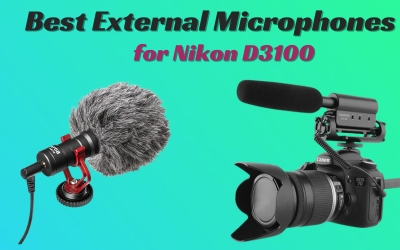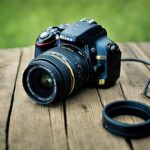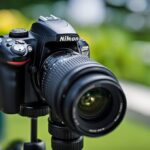How do you sing with a condenser mic? It’s a question that many aspiring singers ask themselves when they’re starting out. The truth is, singing with a condenser mic is a bit different than singing with other types of microphones. But don’t worry, with a little bit of knowledge and practice, you can learn how to get the best sound out of your condenser mic and take your vocals to the next level.
In this article, we’ll take you through everything you need to know about singing with a condenser mic. We’ll cover the basics of understanding condenser microphones and setting up your mic for optimal sound quality.
We’ll also give you some tips on how to sing with a condenser mic, including techniques for getting the best sound out of your voice. So, whether you’re a beginner or an experienced singer, read on to learn everything you need to know about singing with a condenser mic.
Key Takeaways
- Understand the basics of condenser microphones and how to set them up for optimal sound quality.
- Use proper microphone technique and vocal techniques for the best sound.
- Experiment with mixing and post-production techniques to enhance your sound.
Table of Contents
ToggleUnderstanding Condenser Microphones
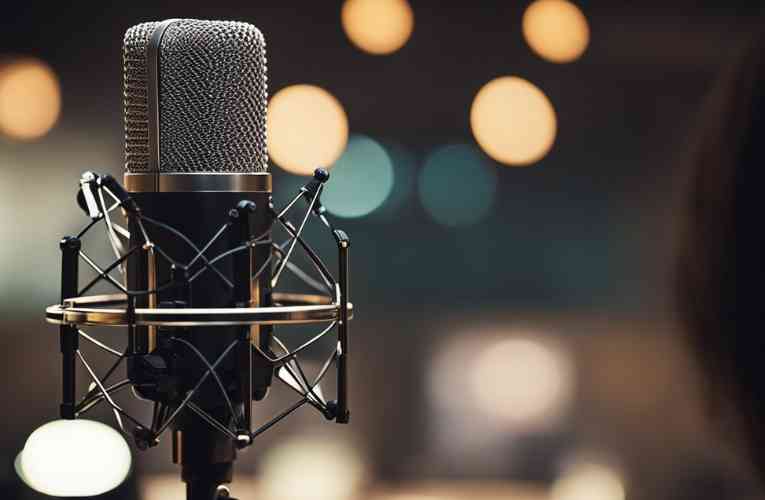
If you’re planning to sing with a condenser microphone, it’s essential to have a basic understanding of this type of microphone. Condenser microphones are known for their sensitivity and ability to capture high-frequency sounds with accuracy. They are commonly used in recording studios, live performances, and broadcasting because of their superior sound quality.
Types of Condenser Microphones
There are two types of condenser microphones: large-diaphragm and small-diaphragm. Large-diaphragm condenser microphones are commonly used for recording vocals, while small-diaphragm condenser microphones are ideal for capturing acoustic instruments such as guitars and pianos.
Polar Patterns and Pickup
Condenser microphones have different polar patterns that determine the directionality of the microphone. The most common polar patterns are cardioid, omnidirectional, and bi-directional. Cardioid microphones are ideal for recording vocals because they pick up sound from the front while rejecting sound from the back.
Omnidirectional microphones pick up sound from all directions, making them ideal for recording ambient sounds. Bi-directional microphones pick up sound from the front and back, making them ideal for recording interviews.
Phantom Power Requirements
Condenser microphones require phantom power to operate. Phantom power is a DC voltage that is sent through the microphone cable to power the microphone’s electronics.
Most condenser microphones require 48 volts of phantom power, which is commonly supplied by mixing consoles, preamps, and audio interfaces.
Related Posts:
Setting Up Your Condenser Mic
When it comes to singing with a condenser mic, proper setup is essential to achieving the best sound quality. Here are some key factors to consider when setting up your condenser mic.
Optimal Placement
The placement of your condenser mic is crucial for capturing clear and accurate vocals. The ideal placement for a condenser mic is about 6-8 inches away from your mouth, positioned just above your nose. This placement allows for optimal sound capture while minimizing background noise.
Gain Setting
The gain setting on your condenser mic is another important factor to consider. The gain controls the sensitivity of the mic and how much sound it picks up. It’s important to set the gain at an appropriate level to avoid distortion or feedback.
Starting with a low gain setting and gradually increasing it until you achieve the desired volume without distortion.
Use of Pop Filters
Pop filters are essential for reducing plosives, or the popping sounds that occur when pronouncing certain letters such as “p” and “b.” Using a pop filter can help to ensure that your vocals are clear and free of unwanted distortion. Positioning the pop filter about 2-3 inches away from the mic, directly in front of your mouth.
Acoustic Treatment
Lastly, it’s important to consider the acoustics of your recording space. Reflections and echoes can negatively impact the sound quality of your vocals. To minimize these effects, consider using acoustic treatment such as sound-absorbing panels or blankets.
Additionally, recording in a smaller, more enclosed space to minimize background noise and improve sound quality.
Related Posts:
- Mic placement for clear vocal recordings
- Best Techniques for Positioning Your Condenser Mic during Vocal Sessions
How do you sing with a condenser mic?
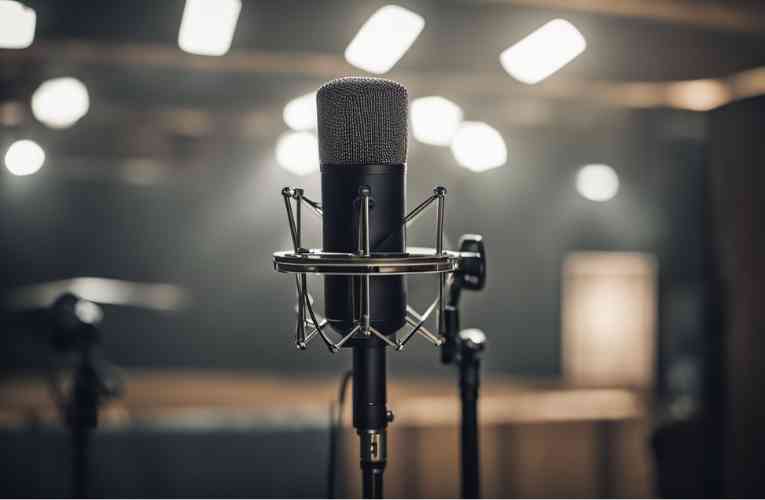
If you are planning to sing with a condenser mic, there are a few things you should keep in mind to get the best possible sound. In this section, we will discuss some tips to help you sing with a condenser mic.
Breath Control
Breath control is crucial when singing with a condenser mic. Since condenser mics are very sensitive, they can pick up even the slightest breath sounds. Therefore, it’s essential to work on your breath control to avoid unwanted sounds in your recordings.
One way to improve your breath control is to practice diaphragmatic breathing. This technique involves breathing from your diaphragm instead of your chest, which can help you control your breath better.
Proximity Effect
Another thing to keep in mind when singing with a condenser mic is the proximity effect. The proximity effect refers to the increase in bass frequencies when you sing close to the mic.
To take advantage of the proximity effect, you should sing close to the mic to get a warm and full sound. However, you should be careful not to get too close, as this can cause distortion and unwanted noise.
Dynamic Range
Finally, it’s essential to understand the dynamic range when singing with a condenser mic. The dynamic range refers to the difference between the loudest and softest parts of your singing.
Since condenser mics are very sensitive, they can capture a wide dynamic range. Therefore, you should work on your dynamic control to ensure that your singing sounds balanced and consistent.
Related Post
Mixing and Post-Production
Once you have recorded your vocals with a condenser microphone, you will need to mix and edit them in post-production to get the desired sound. Here are some tips on how to mix and edit your vocals effectively:
Equalization
Equalization (EQ) is a process of adjusting the balance between different frequency components in your vocal recording. You can use EQ to boost or cut certain frequencies to enhance or reduce certain aspects of your vocals.
For example, you can boost the high frequencies to add clarity and presence to your vocals, or cut the low frequencies to reduce unwanted rumble or noise.
When using EQ, it is important to listen carefully to your vocals and make subtle adjustments. You can use a graphic equalizer or a parametric equalizer to adjust the frequency bands. A graphic equalizer allows you to adjust fixed frequency bands, while a parametric equalizer allows you to adjust the center frequency, bandwidth, and gain of each band.
Compression
Compression is a process of reducing the dynamic range of your vocal recording. It helps to even out the volume levels of your vocals, making them sound more consistent and polished. Compression can also help to reduce unwanted noise and improve the overall clarity of your vocals.
When using compression, it is important to set the threshold, ratio, attack, release, and makeup gain correctly. The threshold determines the level at which the compression kicks in, the ratio determines the amount of compression applied, the attack determines how quickly the compression kicks in, the release determines how quickly the compression releases, and the makeup gain determines the overall level of the compressed signal.
Effects and Enhancements
In addition to EQ and compression, you can also use various effects and enhancements to add character and depth to your vocals. For example, you can use reverb to add a sense of space and ambiance, or use delay to create a sense of depth and dimension.
Other effects and enhancements you can use include chorus, flanger, phaser, distortion, and saturation. However, it is important to use these effects sparingly and tastefully, as too much processing can make your vocals sound unnatural and overproduced.
Conclusion
To sing with a condenser mic, you need to position yourself about 6 to 12 inches away from the microphone. Use a pop filter to prevent exploding consonants, and sing without stressing your voice. Ensure that the microphone faces your mouth directly and turn up the microphone’s volume if you can’t hear yourself well.
Condenser microphones are preferred for recording vocals because they capture intricate details and nuances in a singer’s voice. They offer a wide frequency range and are sensitive to sound, making them ideal for live performances and studio recordings. However, their sensitivity makes them vulnerable to harsh transients and excessively high decibel levels.
To set up a condenser mic for clear vocals, you need to adjust the gain level, polar pattern, and distance from the microphone. Experiment with different settings to find the best sound for your voice. Remember to use good microphone technique, such as maintaining a consistent distance from the mic and avoiding plosives and sibilance.
Frequently Asked Questions
What are the best practices for mic placement when recording vocals with a condenser microphone?
Mic placement is crucial when recording vocals with a condenser microphone. The ideal placement for a condenser mic is about 6-8 inches away from the singer’s mouth. This distance allows the mic to capture the full range of the singer’s voice, while also minimizing the risk of plosives and sibilance. Placing the mic slightly above the singer’s mouth can also help to reduce plosives. It’s important to experiment with mic placement until you find the sweet spot that works best for your voice.
How does a small diaphragm condenser microphone differ from a large one for vocal recordings?
Small diaphragm condenser microphones are generally better suited for recording instruments, while large diaphragm condenser microphones are better suited for recording vocals. This is because large diaphragm mics are more sensitive and can capture more detail in the human voice. They also tend to have a warmer, more natural sound that complements vocals well. However, small diaphragm mics can still be used for vocals if you’re looking for a more detailed, precise sound.
What settings should I use on a condenser mic for optimal live singing performance?
When using a condenser mic for live singing, it’s important to set the gain level appropriately to avoid distortion. You should also use a pop filter to reduce plosives and a shock mount to reduce handling noise. In terms of EQ, it’s generally best to start with a flat response and then adjust as needed to suit your voice and the acoustics of the room.
Can you use a condenser microphone with a smartphone for quality vocal recordings, and how?
Yes, you can use a condenser microphone with a smartphone for quality vocal recordings. You’ll need to purchase an adapter that allows you to connect the mic to your phone’s headphone jack or Lightning port. Once you’ve connected the mic, you can use any recording app on your phone to capture your vocals.
What are the key tips for a female vocalist when using a condenser mic?
Female vocalists should pay particular attention to mic placement and EQ when using a condenser microphone. Placing the mic slightly above the mouth can help to reduce plosives and sibilance, which can be more pronounced in female voices. EQ should be adjusted to complement the unique qualities of the female voice, which tends to have a higher range and more delicate nuances than male voices.
What are common mistakes to avoid when singing into a condenser microphone?
One common mistake to avoid is singing too close to the mic, which can result in distortion and a boomy, muddy sound. Another mistake is failing to use a pop filter, which can result in harsh plosives that can damage the mic. It’s also important to avoid sudden movements or handling the mic roughly, as this can result in unwanted noise and distortion.

